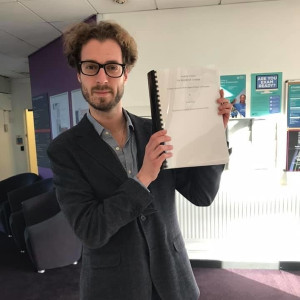Chapters
- Read the Text Carefully: Read the text thoroughly to gain an overall understanding of its purpose, audience, and tone. Identify the main argument or message and the language used to support it.
- Identify Language Techniques: Identify and highlight any language techniques used in the text. These include rhetorical questions, repetition, alliteration, metaphors, and similes, among others. Consider how these techniques contribute to the overall effect of the text.
- Consider the Tone and Style: Consider the tone and style of the text. Is it formal or informal, persuasive or informative? Analyze the writer's choice of language to achieve the desired tone and style.
- Analyze the Use of Vocabulary: Analyze the use of vocabulary in the text. Consider the writer's use of specific words and phrases and their connotations. Identify any specialist vocabulary and consider its impact on the text.
- Consider the Sentence Structure: Analyze the sentence structure in the text. Consider the length and complexity of sentences and how they contribute to the overall effect of the text. Look for any use of short, punchy sentences or long, complex ones.
- Evaluate the Effect on the Reader: Consider the effect of the language on the reader. Analyze how the language is used to persuade, inform, or manipulate the reader. Consider how the writer uses language to evoke emotions and appeal to the reader's senses.
- Consider the Context: Consider the context in which the text was written. Analyze how the language used reflects the cultural, social, and historical context of the time.

What is a Non-fiction Text?
A non fiction text refers to a text that is based on factual information. It includes any text except fiction like a made up story or poetry.
Types of Non-fiction Texts
There are many types of non-fiction texts and they are present everywhere. For instance, you can find a non-fiction text at the back of the chocolate packet or it can be present in the newspaper. When you read a review of a new application or gadget, you are actually reading a non-fiction text. Non-fiction texts have several purposes and they target different people. Some examples of non-fiction texts are given below:
- Advertisements
- Biography
- Letters
- Diaries
- Reviews
- Newspaper articles
- Magazine Articles
- Information leaflets
Purpose of a Non-fiction Text
When you have presented a non-fiction text, try to analyze it by thinking TAP.
- T stands for the type of non-fiction text
- A Stands for audience
- P stands for purpose
A non-fiction text serves many purposes such as:
A text can serve many purposes such as:
- Entertaining: making the reader enjoy reading the text and having fun.
- Persuading: influencing the reader's opinion, but these texts may not be fair and could be biased.
- Advising: helping people decide what to do by providing ideas and options.
- Analyzing: breaking down something to help people understand it better.
- Arguing: making a case for something, even if the text is one-sided.
- Describing: giving specific details about a person, place, object, or experience.
- Explaining: making clear how and why something works or happens in a specific way.
- Informing: telling the reader about something they don't know or adding to their knowledge.
- Instructing: telling the reader how to do something, step-by-step.
Effects of Language in Non-fiction Texts
Writers intentionally select words and language elements to impact their audience. Additionally, the arrangement of different components in a text, such as introductions and conclusions, also plays a role in shaping the reader's experience.
How to Analyze Language?
You will come across the exam questions which will prompt you to comment on how the writer has used language to make an impression on the reader. To answer these questions, you should use the terms to demonstrate that you understand the features used by the writer as well as their impact on the reader.
Framework for Language Analysis - SQuID
To analyze a language in a non-fiction text, use a SQuID framework. Here:
- S stands for statement. It means to identify the language feature or type of language the writer has used in the text. For example, 'King uses similes'
- Qu stands for a quote. It means that after making a statement you need to quote the word or phrase from the text you are analyzing. For example, 'justice rolls down like water'
- I stand for infer. It means that after quoting, you need to work out the meaning of words or images. For instance, 'water' refers to something that is flowing steadily
- D stands for developing. In this step, you should develop the analysis by commenting on the reader's response. For example, Water in the text makes the reader imagine justice which is strong and moving forward like water.
Focus on individual words and phrases to make the analysis even more powerful. Pay close attention to them to understand what they are suggesting. For example, if in a text, it is mentioned that a character is stony-faced, then you can comment that the character is hard or unfeeling.












Thank you, this really helped my child! He is now in Reading Boys!!!
😃